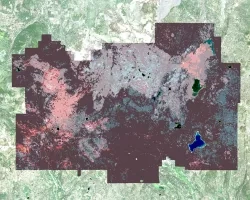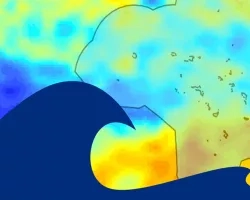Vermont & New Hampshire Ecological Forecasting (Spring 2022)
Team: Seamore Zhu (Project Lead), Katie Caruso, Morgan Dean, Jacob Orser
Summary: The invasive, herbivorous insect Lymantria dispar is a major defoliator of hardwood trees in the northeastern United States. Established populations of L. dispar typically rest at low levels but undergo recurring outbreaks that cause tree mortality if they occur in quick succession or are combined with other stressors on tree health. Widespread defoliation events disrupt local wildlife, economies, and livelihoods. Accurate monitoring of defoliation events is necessary to implement effective land management practices that support tree health. There are challenges to accurately monitoring L. dispar outbreaks that include the ephemeral character of defoliation disturbances and the difficulties of conducting large-scale surveys of L. dispar populations using existing aerial and ground-based data collection methods. To better monitor the impact of L. dispar on forests in Vermont and New Hampshire, the NASA DEVELOP team partnered with organizations responsible for supporting land and invasive species management including the Forest Ecosystem Monitoring Cooperative, the Vermont Agency of Agriculture, Food and Markets, the University of New Hampshire Cooperative Extension, and the New Hampshire Division of Forests and Lands, Forest Health Program. The team used NASA Earth observations collected by the Terra, Soil Moisture Active Passive (SMAP), Shuttle Radar Topography Mission (SRTM), Landsat 7, and Landsat 8 satellites along with ancillary datasets to map historical tree defoliation from 2012 to 2021. In support of partners’ future land management efforts, the team created a Google Earth Engine tool that displays annual defoliation extent.



